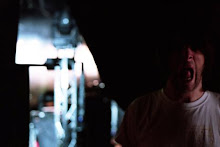SALEM, Ore. (AP) — The crumbling Oregon State Hospital had toxic paint, asbestos and a leaky roof — an enduring symbol of the psychiatric neglect portrayed in "One Flew Over the Cuckoo's Nest," filmed at the 127-year-old facility.
On Thursday, officials unveiled part of a new hospital that will replace the decrepit asylum and, they hope, a legacy of real abuses that never made it into a Hollywood film but very well could have.
Forty percent of the 19th century building was unusable, left to rot and collect piles of pigeon droppings.
In its shadow, is a new hospital designed to facilitate modern theories in mental health treatment, trying to mimic as much as possible daily life outside the institution.
"This setting will no-longer be known for a Hollywood movie or a place of broken hope," said Gov. Ted Kulongoski, a Democrat finishing his final term in office. "It will be the life at the end of despair and the start of a new dawn that will help patients recover."
A maximum security section is the first major portion of the new hospital. It's the admissions and stabilization center, where the most vulnerable patients are brought in from the outside world.
In the old hospital, patients are segregated into wards based on their condition. Schizophrenia over here. Depression over there. They stay in their corner of the institution with the same patients and the same staff and are treated for one condition at a time.
It was built for an era when psychiatrists theorized that patients would get better from interactions with others who shared their ailments.
But doctors now know that many patients suffer from multiple conditions. In the new facility, patients from different wings will be brought together in a "treatment mall" where they have access to recreation, medical services and social interaction. It's all designed to give them choices.
Sensitivity rooms with adjustable lighting and music will help edgy patients get away from bothersome stimuli and calm down.
Metal bars that protected glass windows are gone, replaced in the new building with modern shatterproof windows. There's no barbed wire or chain-link fencing. And patients in the stabilization ward will have their own rooms, giving them privacy and dignity that helps with their treatment but is unattainable in the old building.
Along with the upgraded facilities, the hospital is hiring new staff and stepping up care to its patients, almost all of whom are involuntarily committed by a judge.
In the new treatment model, there's no subtly demeaning Nurse Rached; patients are encouraged to take part in their own care. They meet with a medical team to discuss their personal goals and work out a plan to accomplish them. Treatment is more effective when patients buy in, officials said.
The buildings that were the set for "Cuckoo's Nest" are still standing, for now. Some parts are still housing patients, others are abandoned.
Faded, peeling yellow paint and broken windows stand out as an enduring symbol of the neglect that too often met the patients who passed through over more than a century. Most of it will be torn down once the patients are moved to the new building next year.
A portion of the original 1883 building — the part considered most architecturally significant — is being restored and will eventually house a mental health museum.
All the changes upgrade a facility that just two years ago was the subject of a scathing report by the U.S. Department of Justice. Federal investigators found mice in rooms, deaths from pneumonia and outbreaks of scabies, along with nearly 400 cases of patient-against-patient assault over one year.
One patient had been in seclusion for a year with no other treatment. Another patient with a condition that causes excessive thirst was left at a water fountain and gained 13 pounds in water weight in one day.
The Oregonian newspaper in Portland has reported extensively on abuses in the hospital, including the death last year of a 42-year-old man who succumbed to a heart attack in his bed hours before anyone found his body. Nobody checked on him even though he'd missed two meals and didn't show up for his medicine.
Although "Cuckoo's Nest" was filmed here, neither the movie nor the 1962 Ken Kesey novel on which it was based makes any specific references to Oregon State Hospital. Kesey drew on his experiences working at a veterans hospital in Palo Alto, Calif., and set his satirical story at an unnamed institution in Oregon.
For all the attention the move brought to abuses at mental health institutions, it was 30 years before enough support galvanized to demolish and rebuild Salem's decaying shrine to psychiatry's dark history.
It wasn't until state lawmakers toured the hospital in 2004 and were stunned by a grim discovery: the cremated remains of 3,600 patients locked away and forgotten inside corroding copper canisters.
The remains belonged to patients who died at the hospital from the late 1880s to the mid-1970s. During the earlier part of that period, mental illness was considered so shameful that many patients were all but abandoned by their families and left to wither in the state asylum.
"You can see the place where they showered. You can see their scratchings on the wall," said Oregon Senate President Peter Courtney, a Democrat who helped get money for the new hospital after that 2004 tour. "They lived there. And then often people forgot them. They just took them there and it was over.
Tuesday, 23 November 2010
Subscribe to:
Post Comments (Atom)

No comments:
Post a Comment